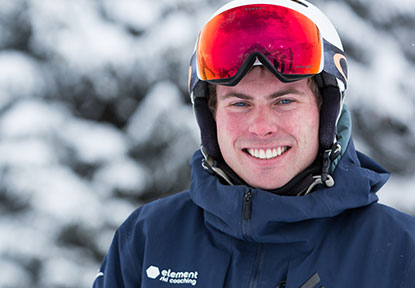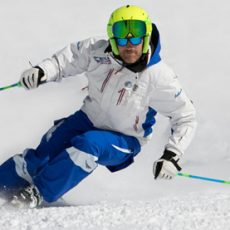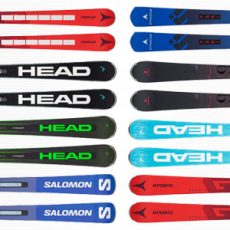DIVERSITY OF TRAINING:
PREPARING FOR YOUR ISIA TECH
Concept Coach Will Peek talks about the best way to train for the tech – especially moving beyond an obsession with piste performance.
A common mistake ski instructors make when starting out in their mission to pass the BASI Level 3 Technical exam is to focus purely on piste performance.
Whilst this is arguably the most heavily weighted area of the assessment, that does not mean that you should weight your training time and focus in the same way.
In this blog I want to make the case for greater diversity in training, to have the goal of becoming a well rounded skier – of the whole mountain.
This means skiing piste, off-piste* and bumps in equal measure, whilst also throwing in some gate and park training.
This applies both to during formal training sessions but particularly when you have time to free-ski.
The Technical benefits
The technical benefits alone will be huge and will feed into your piste performance. By experiencing this variety in your skiing, you will develop a much better grasp and control of your steering inputs, and body management.
Just grinding away at shorts or longs all day (everyday) trying to achieve a very narrow range of inputs creates skiers that are one dimensional, who are unable to adapt quickly.
In contrast, a well rounded skier will be able to change and adapt their skiing quickly and on request, something that will be invaluable in an exam situation, such as the BASI 3 tech!
For example, changing your skiing environment with some off-piste skiing can be particularly effective. Snow conditions and terrain that are totally variable demand flexibility and diversity in the blend of steering inputs and body management, creating an effective outcome in every situation.
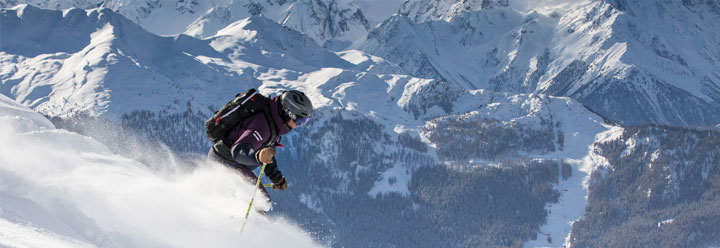
Developing tactical skills
In addition, a diverse training approach can also provide you with a greater tactical awareness.
Of course, off-piste skiing is also great for this, changing up the choice of speed and line is essential to making the most of the snow and terrain off piste.
Another example can be found in skiing gates, where it is invaluable to be able to alter and choose an appropriate line to be fast through a course.
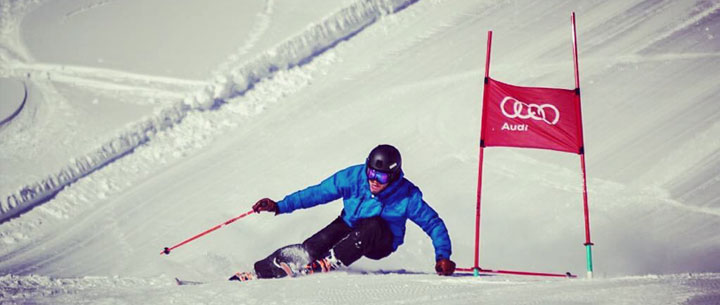
Physical intensity
Training in gates can also be a very effective way to develop your performance from a physical point of view.
Skiing is, of course, an extremely physically demanding sport and the more physical effort you can give to a performance the better. So skiing in gates is great for raising the bar in terms of physical intensity.
In our training courses we include an element of gates training as we always find that people learn to up their game physically as they fight to stay in the course and be the quickest down the hill (also, it’s great fun!).
Freestyle and balance
Probably the most neglected area of skiing (by ski instructors at least) is freestyle.
Now I’ll be the first to admit that I don’t train this enough myself, but it’s certainly a type of skiing that can help us free up our movements and develop stronger body management.
It can also help us find more fluidity in our skiing, a strong freestyle skier in the park is always great to watch as they display supreme balance and flow.
This is something that can be massively beneficial when moving away from the park into other areas of the mountain.
Our Concept Level 3 training also features freestyle training days with a professional freestyle coach for this reason – it’s a real step change from ‘normal’ training so we see a big shift in the way trainees have to make changes to body management.
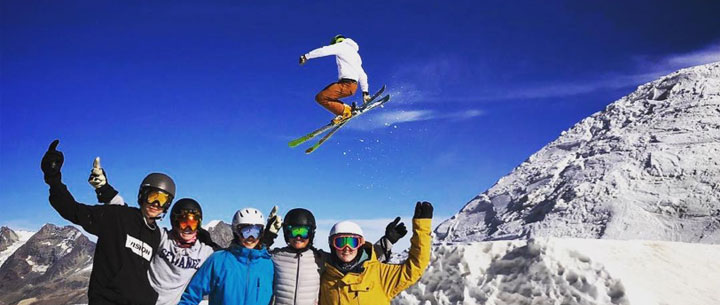
Psychology
From our years training BASI candidates we have also seen that the psychological factor is invariably pretty significant for almost all trainees.
This may be finding bumps scary or intimidating, or it could be struggling to find a productive head space to perform well when the pressure is on.
Ensuring that you spend enough time on every strand is essential to becoming comfortable in all situations on the mountain. Of course a big field of moguls or steep off piste will be intimidating if you only ski that terrain occasionally, when asked to do so by a coach or examiner.
That’s not to say that you have to go and chuck yourself into big moguls or steep couloirs – build it up from a level you are comfortable with. But you can’t afford to neglect these areas of skiing if you want to become a really well-rounded, adaptable skier.
Don’t forget the fun…
Finally and most importantly, remember the fun factor! Bashing out run after run of the same type of skiing all day or all week will no doubt drive you insane.
With variety comes greater enjoyment, which is after all, what skiing is all about!
If you’re adept and comfortable with all forms of skiing, no matter what, you can make the most of any conditions. You’ll have more fun and when you’re out teaching, your clients will too!
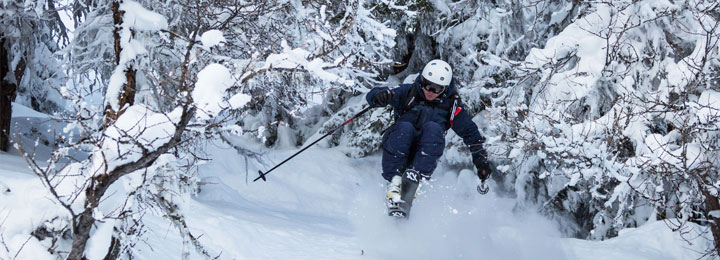
*Please note: There is a lot of reference to skiing off-piste here. Off-piste is inherently dangerous and should only be undertaken with the appropriate equipment and level of knowledge. Read our blog about off-piste safety for more information.

